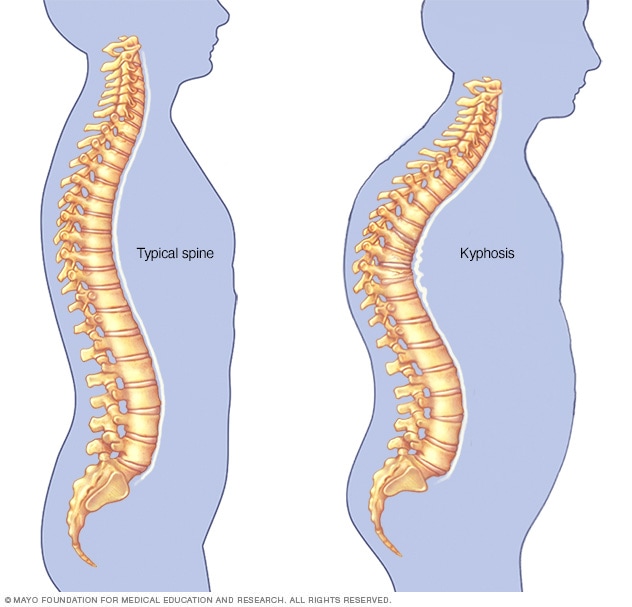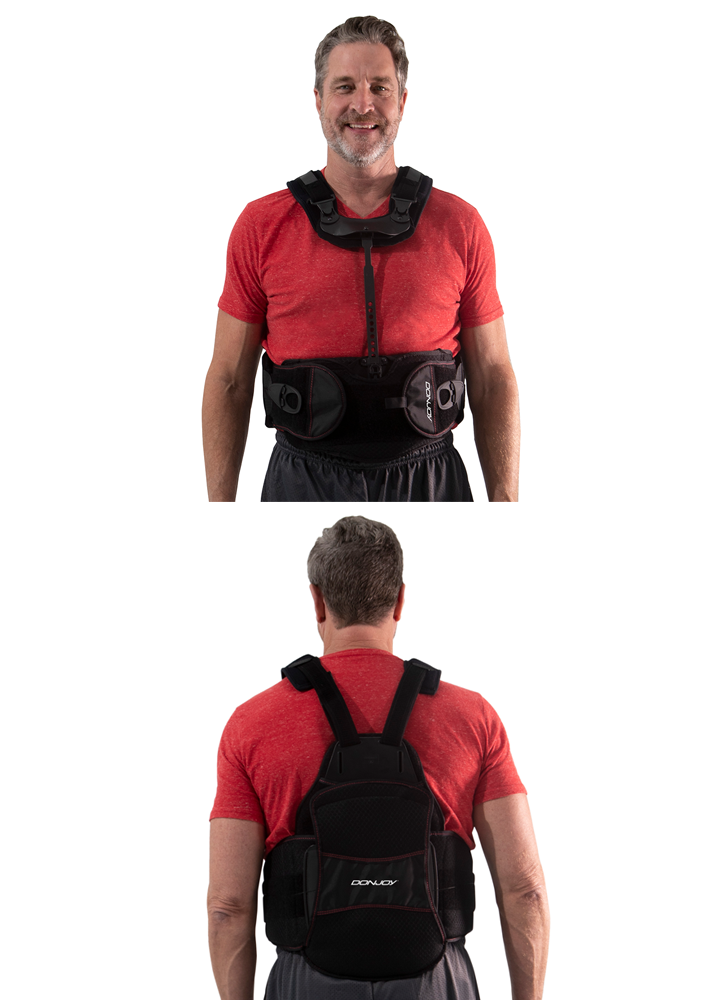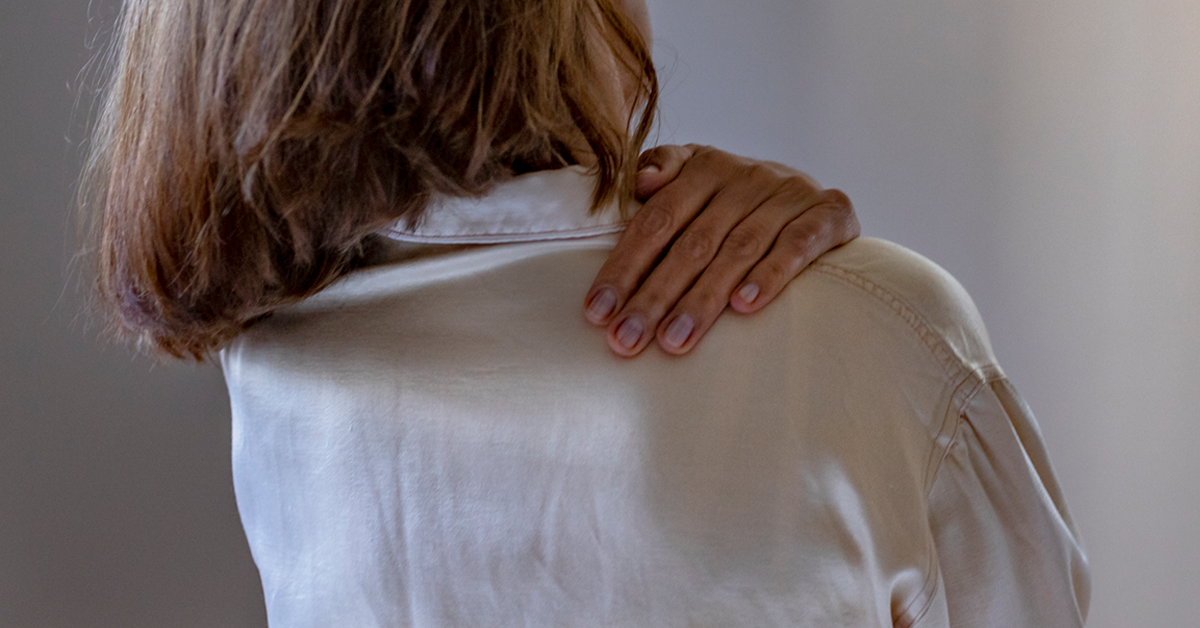In some people, kyphosis can be a debilitating spine condition that left untreated can have a severe impact on people’s lives. For older people in particular, if severe, the consequences can be life-threatening. However, evidence suggests that wearing a back brace can help address the symptoms of kyphosis.
What is kyphosis?
Kyphosis is defined as excessive curvature of the spine in the sagittal (front to back) plane. Normally there is 20° to 45° of curvature in the upper back, but anything in excess of 45° is called kyphosis (Website Source).
The condition gives the top of the back a more rounded appearance. The back may be painful, flexibility of the spine is reduced, and tiredness may also be experienced (Website Source).
What causes kyphosis?
In addition to spinal injuries, there are a number of different ways in which the upper back can become overly curved (Website Source):
- Postural kyphosis—bad posture from slouching or carrying heavy bags can affect the muscles and ligaments supporting the spine and increase spinal curvature
- Scheuermann’s kyphosis—vertebrae that do not develop properly can become abnormally shaped and out of position
- Congenital kyphosis—when a child’s spine does not develop correctly in the womb, the vertebrae can become fused together
- Age-related kyphosis—as people grow older, the spine can become increasingly curved

Why is kyphosis a problem for older people?
Among the elderly population, the most commonly reported symptoms are weak back extensor muscle strength, loss of spinal mobility, and pain, along with the general degenerative components such as disc dehydration and changes in vertebral shape/wedging1.
For older people, kyphosis can have significant impact on function, quality of life, and mortality. Because it has a negative effect on gait and balance, older kyphosis sufferers are at increased risk of falls and fractures. Furthermore, severe kyphosis reduces the amount of space in the chest, mobility of the rib cage, and expansion of the lungs, which may lead to breathing problems, particularly in women2.
Older women with kyphosis are 70% more likely to suffer a fracture, regardless of age or prior fracture, and this risk increases as the condition progresses3.
How is kyphosis treated?
According to the NHS, it is usually only severe cases of kyphosis that require surgical treatment (Website Source). The condition can usually be improved by correcting posture through exercise and physiotherapy, while over-the-counter analgesics can be used to manage pain.
For children with mild to moderate kyphosis, bracing is recommended to minimize the progression of the curve whilst the spine is still growing (Website Source). In adolescents, bracing using an orthosis has been seen to reduce kyphosis ranging from 55 to 80°1.
In patients over the age of 60, bracing improves the balance score, and reduces spinal deformity and pain. If there is lumbar spine involvement, bracing and exercises should be prescribed for patients with kyphosis. Bracing becomes more of an attractive option for elderly patients when considering that the high risk of surgery for this age group means that surgical intervention is less likely to be recommended1.
What is a TLSO brace?
A thoracolumbosacral orthosis (TLSO) is a brace worn over the whole or part of the thoracic, lumbar, and sacral portions of the spinal column. TLSOs are prescribed to control motion, correct deformity, and/or compensate for weakness3.
Get customizable back support for kyphosis with IsoFORM™ TLSO
The IsoFORM™ TLSO back brace from DonJoy® is designed to provide motion restriction, creating a dynamic environment for healing within the thoracolumbar and lumbar spine.
It is intended for acute pain relief by thoracic postural extension alignment, compression fractures of the thoracic spine, osteoporosis, thoracic mechanical back pain, and kyphosis.
IsoFORM TLSO’s customizable lumbar belt encompasses the torso and restricts flexion and rotation, thereby providing stability for the trunk. Along with the posterior extending straps, this promotes postural correction for the upper spine, helping to relieve the symptoms of kyphosis.
The brace’s many customizable features allow it to be modified to suit the patient and achieve the optimum performance. The malleable telescoping sternal bar can be shaped for a custom fit, while the straps can be positioned in over-the-shoulder or underarm configurations to aid comfort.
Targeted compression and support are provided by a dual pulley system and an overlapping panel system consisting of anterior, posterior, and lateral extension panels.
Comfortable to wear and easy to don and doff, IsoFORM TLSO is available in two sizes (Small/medium and large/extra-large), and fits hips from 71 to 152 cm in circumference.
Supplemental aid is available in the form of a reusable hot/cold pack accessory sold separately for use with the brace. Simply warm up or freeze the pack before placing it into the brace’s purpose-built pocket to deliver heat or cooling therapy. It can be used for common aches, pains, swelling, and bruising, and provides fast relief for sore and stiff joints, muscle aches and pain, and muscle tension and cramps.
As well as kyphosis, IsoFORM TLSO is suitable for people with compression fractures of the thoracic spine, osteoporosis, and thoracic mechanical back pain.
You can learn more about IsoFORM TLSO by downloading our brochure
Or by visiting enovis-medtech.eu
References
- Bettany-Saltikov, J., Turnbull, D., Ng, S.Y., Webb, R. (2017). Management of Spinal Deformities and Evidence of Treatment Effectiveness. Open Orthop J. Dec 29(11), 1521-1547.
- Lorbergs, A. L., O’Connor, G. T., Zhou, Y., Travison, T. G., Kiel, D. P., Cupples, L. A., Rosen, H., & Samelson, E. J. (2017). Severity of Kyphosis and Decline in Lung Function: The Framingham Study. The journals of gerontology. Series A, Biological sciences and medical sciences, 72(5), 689–694.
- Huang, M. H., Barrett-Connor, E., Greendale, G. A., & Kado, D. M. (2006). Hyperkyphotic posture and risk of future osteoporotic fractures: the Rancho Bernardo study. Journal of bone and mineral research : the official journal of the American Society for Bone and Mineral Research, 21(3), 419–423.
Website
Kyphosis – Treatment – NHS (www.nhs.uk) accessed 07 May 2021










